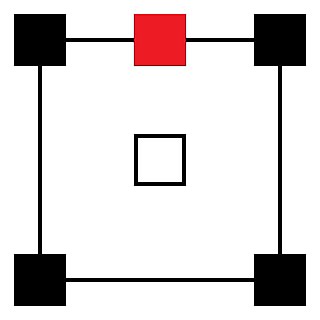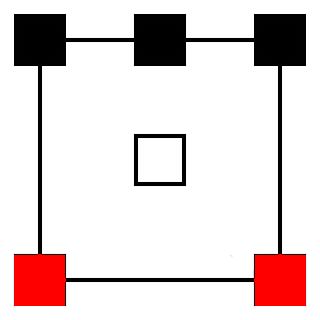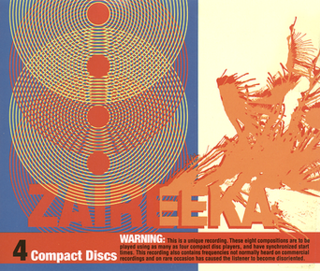 W
WSurround sound is a technique for enriching the fidelity and depth of sound reproduction by using multiple audio channels from speakers that surround the listener. Its first application was in movie theaters. Prior to surround sound, theater sound systems commonly had three "screen channels" of sound that played from three loudspeakers located in front of the audience. Surround sound adds one or more channels from loudspeakers to the side or behind the listener that are able to create the sensation of sound coming from any horizontal direction around the listener.
 W
W5.1 surround sound is the common name for six-channel surround sound audio systems. 5.1 is the most commonly used layout in home theatres. It uses five full bandwidth channels and one low-frequency effects channel. Dolby Digital, Dolby Pro Logic II, DTS, SDDS, and THX are all common 5.1 systems. 5.1 is also the standard surround sound audio component of digital broadcast and music.
 W
W7.1 surround sound is the common name for an eight-channel surround audio system commonly used in home theatre configurations. It adds two additional speakers to the more conventional six-channel (5.1) audio configuration. As with 5.1 surround sound, 7.1 surround sound positional audio uses the standard front left and right, center, and LFE (subwoofer) speaker configuration. However, whereas a 5.1 surround sound system combines both surround and rear channel effects into two channels, a 7.1 surround system splits the surround and rear channel information into four distinct channels, in which sound effects are directed to left and right surround channels, plus two rear surround channels.
 W
WAmbisonics is a full-sphere surround sound format: in addition to the horizontal plane, it covers sound sources above and below the listener.
 W
WAuro 11.1 is one of the cinematic speaker layouts of the Auro-3D format, invented in 2005 by Wilfried Van Baelen. The Auro 11.1 cinema audio format is supported by Barco, a global visualization technology and digital cinema projection company.
 W
WCenter channel refers to an audio channel common to many surround sound formats. It is the channel that is mostly, or fully, dedicated to the reproduction of the dialogue of an audiovisual program. The speaker(s) connected to the center channel are placed in the center of and behind the perforated projection screen, to give the effect that sounds from the center channel are coming from the screen. In many home surround sound units, the center channel is positioned above or below the video screen.
 W
WCompatible Discrete 4, also known as Quadradisc or CD-4 was as a discrete four-channel quadraphonic system for phonograph records. The system was created by JVC and RCA in 1971 and introduced in May 1972. Many recordings using this technology were released on LP during the 1970s.
 W
WDolby Atmos is a surround sound technology developed by Dolby Laboratories. It expands on existing surround sound systems by adding height channels, allowing sounds to be interpreted as three-dimensional objects. Following the release of Atmos for the cinema market, a variety of consumer technologies have been released under the Atmos brand, using in-ceiling and up-firing speakers.
 W
WDolby Cinema is a premium cinema created by Dolby Laboratories that combines Dolby proprietary technologies such as Dolby Vision and Dolby Atmos, as well as other signature entrance and intrinsic design features. The technology competes with IMAX and other premium large formats such as Cinemark's XD and Regal's RPX.
 W
WDolby Headphone is a technology developed by Lake Technology (Australia), that later sold marketing rights to Dolby Laboratories, sometimes referred to as Mobile Surround, which creates a virtual surround sound environment in real-time using any set of two-channel stereo headphones. It takes as input either a 5.1 or a 7.1 channel signal, a Dolby Pro Logic II encoded 2 channel signal or a stereo 2 channel signal. It sends as output a 2 channel stereo signal that includes audio cues intended to place the input channels in a simulated virtual soundstage.
 W
WDTS, Inc. is an American company that makes multichannel audio technologies for film and video. Based in Calabasas, California, the company introduced its DTS technology in 1993 as a higher-quality competitor to Dolby Laboratories, incorporating DTS in the film Jurassic Park (1993). The DTS product is used in surround sound formats for both commercial/theatrical and consumer-grade applications. It was known as The Digital Experience until 1995. DTS licenses its technologies to consumer electronics manufacturers.
 W
WDTS-HD Master Audio is a multi-channel, lossless audio codec developed by DTS as an extension of the lossy DTS Coherent Acoustics codec. Rather than being an entirely new coding mechanism, DTS-HD MA encodes an audio master in lossy DTS first, then stores a concurrent stream of supplementary data representing whatever the DTS encoder discarded. This gives DTS-HD MA a lossy "core" able to be played back by devices that cannot decode the more complex lossless audio. DTS-HD MA's primary application is audio storage and playback for Blu-ray Disc media; it competes in this respect with Dolby TrueHD, another lossless surround format. DTS-HD MA has enjoyed the greater share of this market since 2010, with the notable exception of the TrueHD-encoded Dolby Atmos spatial surround format, which is more popular than DTS's competing DTS:X.
 W
WA home theater in a box (HTIB) is an integrated home theater package which "bundles" together a combination DVD or Blu-ray player, a multi-channel amplifier, speaker wires, connection cables, a remote control, a set of five or more surround sound speakers and a low-frequency subwoofer cabinet. In 2016, they are manufactured by most makers of consumer electronics. Budget HTIB's with generic or lower-price "house" brands may be a "2.1" system. Many, however, are a full "5.1" system and some higher-end packages even have a 7.1 system. Some popular manufacturers of HTIB's are RCA, Philips, Panasonic, Sony, Yamaha, LG and Samsung, all of which make a variety of mid-price range packages. Bose and Onkyo make higher-end, higher-priced HTIB packages.
 W
WMP3 Surround is an extension of MP3 for multi-channel audio support including 5.1 surround sound. It was developed by Fraunhofer IIS in collaboration with Thomson and Agere Systems, and released in December 2004.
 W
WQuadraphonic Sound was a matrix 4-channel quadraphonic sound system for phonograph records. The system was based on technology created by Peter Scheiber, but further developed by engineer Ryosuke Ito of Sansui in the early 1970s.
 W
WQuadraphonic sound – equivalent to what is now called 4.0 surround sound – uses four audio channels in which speakers are positioned at the four corners of a listening space. The system allows for the reproduction of sound signals that are independent of one another.
 W
WRevel is an American manufacturer and distributor of high-end luxury audio loudspeakers. It is owned by Harman International Industries, a subsidiary of Samsung Electronics. The company is based in Stamford, Connecticut, United States.
 W
WSony Dynamic Digital Sound is a cinema sound system developed by Sony, from which compressed digital sound information is recorded on both outer edges of the 35 mm film release print. The system supports up to eight independent channels of sound: five front channels, two surround channels and a single sub-bass channel. The eight channel arrangement is similar to large format film magnetic sound formats like Cinerama and Cinemiracle. The five front channels are useful for very large cinema auditoriums where the angular distance between center and left/right channels may be considerable. SDDS decoders provide the ability to downmix to fewer channels if required.
 W
WSQ Quadraphonic was a matrix 4-channel quadraphonic sound system for vinyl LP records. It was introduced by CBS Records in 1971. Many recordings using this technology were released on LP during the 1970s.
 W
WSurround channels are audio channels in surround sound multichannel audio. They primarily serve to deliver ambience and diffuse sounds in a film or music soundtrack.
 W
WUD-4 was a discrete four-channel quadraphonic sound system for phonograph records introduced by Nippon Columbia (Denon) in 1974. This system had some similarities with the more successful CD-4 process introduced by JVC and RCA in 1972.
 W
WZaireeka is the eighth studio album by American rock band The Flaming Lips, released on October 28, 1997 by Warner Bros. Records. The album consists of four Compact Discs designed so that when played simultaneously on four separate audio systems, they would produce a harmonic or juxtaposed sound; the discs could also be played in different combinations, omitting one, two or three discs. Each of its eight songs consists of four stereo tracks, one from each CD. The album's title is a portmanteau of two words: Zaire, chosen as a symbol of anarchy after Wayne Coyne heard a radio news story about the political instability of the African nation, and Eureka, an expression of joyous discovery.